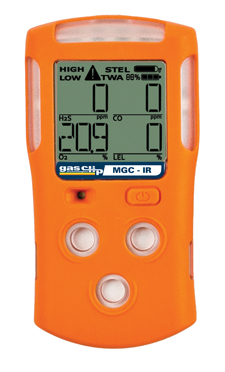
A 4-gas monitor is a vital piece of safety equipment used to detect the presence of dangerous gases in industrial and confined space environments. It is specifically designed to measure four types of gases: oxygen (O2), carbon monoxide (CO), hydrogen sulfide (H2S) what is an lel, and combustible gases such as methane or propane. These monitors are critical in industries like oil and gas, mining, manufacturing, and construction, where gas hazards can lead to serious health risks or even fatalities if not properly managed.
Oxygen levels are one of the most important readings a 4-gas monitor provides. Oxygen deficiency or enrichment can create hazardous situations. Normal oxygen levels in the air should be around 20. 9%. If oxygen levels fall below 19. 5%, the environment is considered oxygen-deficient, which can lead to symptoms like dizziness, confusion, or even suffocation. If levels exceed 23. 5%, the air becomes oxygen-enriched, significantly increasing the risk of fire or explosion. The 4-gas monitor continuously checks oxygen levels, providing real-time feedback to ensure that workers are aware of any dangerous fluctuations.
Carbon monoxide is another gas that poses a significant risk, as it is both colorless and odorless, making it undetectable without proper monitoring. It is commonly produced by the incomplete combustion of fuels like gasoline, wood, or coal. Even small concentrations of carbon monoxide can be harmful, leading to headaches, nausea, and dizziness, while prolonged exposure or high levels can result in unconsciousness or death. A 4-gas monitor detects carbon monoxide and warns workers before levels reach dangerous concentrations, allowing them to take immediate action to ventilate the area or leave if necessary.
Hydrogen sulfide is a toxic gas often associated with industries such as oil refining, natural gas extraction, and wastewater treatment. At low concentrations, it emits a distinct “rotten egg” odor, but at higher levels, it can numb the sense of smell, making it impossible to detect without equipment. Hydrogen sulfide is particularly dangerous because it can cause respiratory issues, eye irritation, and in high doses, it can be fatal. The 4-gas monitor detects hydrogen sulfide levels, alerting workers when concentrations become hazardous so they can evacuate the area or implement other safety measures.
Combustible gases, such as methane, present an explosion risk if allowed to accumulate in confined spaces or poorly ventilated areas. A 4-gas monitor measures the concentration of these gases relative to their lower explosive limit (LEL), which is the minimum amount of gas that can cause an explosion when ignited. By providing early warnings when combustible gas levels approach dangerous thresholds, the monitor helps workers mitigate the risk of fires or explosions by improving ventilation or stopping operations before an incident occurs.
Modern 4-gas monitors are designed to be portable, durable, and easy to use, making them suitable for use in harsh industrial environments. They are often equipped with visual, audible, and vibration alarms that notify workers when gas levels exceed safe limits. In addition, many models offer advanced features such as real-time data logging, wireless communication for remote monitoring, and long-lasting batteries for extended use.
Regular maintenance and calibration are essential to ensure that a 4-gas monitor provides accurate readings. Over time, the sensors used to detect gases may degrade, leading to inaccurate measurements. To prevent this, regular bump tests and calibration procedures should be performed. This ensures that the monitor continues to function correctly, giving workers confidence that they are protected from hazardous gas exposure and helping to prevent accidents in the workplace.


